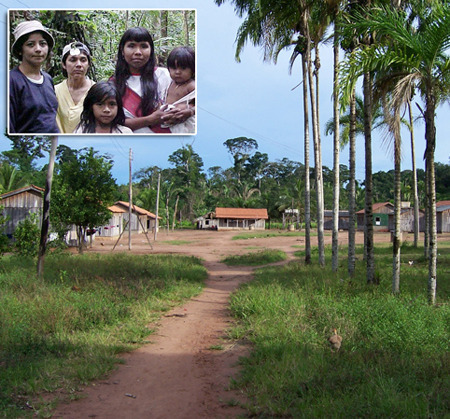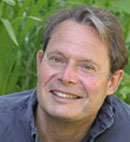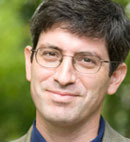Stewart Brand's Blog, page 101
June 17, 2011
Major Update on the 10,000 Year Clock Project
The Long Now Foundation has started excavations for our first 10,000 Year Clock in west Texas.
Though the date of completion of the 10,000 Year Clock has not been set, and it is still many years into the future, we're very pleased to let you know that you can now sign up on our waiting list to visit the Clock!
Long Now Members will have priority to visit the Clock when it is completed and should check the Visit the Clock box in the Notifications tab in Member Settings when signed in as a member on the Long Now website. We will also continue to post project updates on the members only Clock Blog.
Jeff Bezos' team at Amazon have also created a new website at 10000YearClock.net with information for the public about the project as well as a public sign up page for learning about the eventual visiting opportunities there.
We've also updated the Clock section of our website; you can read Kevin Kelly's new piece on the 10,000 Year Clock project, with diagrams of how the Clock will work.
Long Now remains committed to developing our site in Nevada as a 10,000 year installation in parallel with The 10,000 Year Clock in Texas.
All of us at Long Now who are working on the Clock project, the Board, Clock team and Foundation staff are very excited to see the work of the last two decades coming to fruition. Thank you all for your support.







June 14, 2011
Old Trees Around the World
Our friend Scott Beale of Laughing Squid let us know this morning that Salon has a great slideshow of very old trees from around the world, including some Bristlecone Pines and the oldest tree with a recorded planting date.
Check it out:

Photo by Charleston's TheDigitel







June 13, 2011
Telling Time in Amondawa
Reposted from The Rosetta Project blog, written by Colin Farlow:
In a new study published in the journal Language and Cognition "When Time is Not Space," a team of researchers from University of Portsmouth and Federal University of Rondonia claim that the Amondawa, a small Amazonian tribe, speak a language with a very uncommon conceptualization of time. The story was recently picked up by BBC, revealing that the debate about whether language influences thought is very much alive and newsworthy.

According to researchers Sinha et al., the Amondawa have no words for talking abstractly about time (as in the English word 'time'), or time periods (like 'year'):
"What we don't find is a notion of time as being independent of the events which are occurring; they don't have a notion of time which is something the events occur in."
The mapping of time to physical space is commonly found in human language, and its absence in Amondawa is perhaps the most surprising result of the study. Rather than having a time-space metaphor, the Amondawa conceptualization of time is based on "social activity, kinship and ecological regularity."
Pierre Pica, a theoretical linguist at France's National Centre for Scientific Research, question the conclusions derived from this new research. Pica explains that just because Amondawa does not use cardinal chronology, does not mean they view themselves advancing through time any differently than the rest of us who use a cardinal chronological system.
Sinha et al. state that the tribe's language in no way affects their cognitive ability to grasp temporal concepts — they talk about events, and sequences of events, and learn Portuguese which does have abstract time expressions. Rather, the Amondawa language provides a different way of construing and talking about temporal concepts in daily life.
This contention about whether the Amondawa language affects its speakers' thought processes hearkens back to a famous study by Benjamin Lee Whorf on the Hopi Language in the first half of the 20th century. This study was a foundational example for Whorf's "linguistic relativity hypothesis" – the idea that the language you speak influences the way you think. From his study of Hopi, Whorf concluded:
"The Hopi language is seen to contain no words, grammatical forms, constructions or expressions that refer directly to what we call TIME, or to past, present or future, or to enduring or lasting…the Hopi language contains no reference to TIME, either explicit or implicit." [1]
Whorf's ideas about Hopi have received a great deal of criticism over the years, and his data was critiqued as erroneous evidence resulting from deficient research practices. [2] Nevertheless, the idea that language influences thought has certainly stuck around, and is now being raised by a new generation of researchers like Sinha et al who are gathering new data from small and threatened languages around the world.
For more on the relationship of language and thought, listen to our podcasts of previous Long Now seminars by Lera Boroditsky as well as Daniel Everett who talks about Pirahã, a language also from the Amazon.
[1] Whorf, Benjamin Lee. 1950. An American Indian Model of the Universe. The
International Journal of American Linguistics 16(2).
[2] In an interview by BBC, Guy Deutscher explains his ideas about language and thought in addition to describing Benjamin Whorf's research on Hopi Language.
The author of this post, Colin Farlow, is a 02011 summer intern with the Rosetta Project. He recently graduated from Indiana University, where he studied East Asian Languages and Cultures and Philosophy.







June 9, 2011
Long Now Media Update

LISTEN
(downloads tab)
Carl Zimmer's "Viral Time"
There is new media available from our monthly series, the Seminars About Long-term Thinking. Stewart Brand's summaries and audio downloads or podcasts of the talks are free to the public; Long Now members can view HD video of the Seminars and comment on them.







Carl Zimmer, "Viral Time"
What's time to a virus?
A Summary by Stewart Brand
"Everything about viruses is extreme," Zimmer began. The number of viruses on Earth is estimated to be 1 followed by 31 zeroes. Small as they are, if you stacked them all up, the stack would reach 100 million light years. They are the planet's most abundant organism by far.
They're fast. We take decades to reproduce. A flu virus can generate billions of itself in us within hours. And they evolve 10,000 times faster than us…
Read the rest of Stewart Brand's Summary here.







June 3, 2011
Manhattan in motion
Here's a beautiful time-lapse of a pulsing, breathing, flowing superorganism:
Mindrelic – Manhattan in motion from Mindrelic on Vimeo.
(via stellar)







May 27, 2011
Peter Kareiva Ticket Info
Seminars About Long-term Thinking

Peter Kareiva on "Conservation in the Real World"
TICKETS
Monday June 27, 02011 at 7:30pm Marines' Memorial Theater
Long Now Members can reserve 2 seats, join today! • General Tickets $10
About this Seminar:
As chief scientist of one of the most highly respected conservation organizations, The Nature Conservancy, Peter Kareiva is surprisingly radical. "Look," he says, "we're in nature. The deal is how to work with it and how to help it work for us. The better we are at ensuring that people get nature's benefits, the better we'll be at doing conservation." Through his insistence on "evidence-based conservation," he finds most ecosystems far less fragile than people think and none that can be protected as pristine, because pristine doesn't exist any more. His focus is on working the human/nature interface for maximum benefit to both.
Kareiva is co-founder of the Natural Capital Project—allying with Stanford University and the World Wildlife Fund to measure the economic value of ecosystems—and co-author of the new textbook, Conservation Science: Balancing the Needs of People and Nature.
Twitter - up to the minute info on tickets and events
Long Now Blog – daily updates on events and ideas
Facebook – stay in touch through our fan page
Long Now Meetups - join one or start your own







May 26, 2011
Whole Earth Ephemera at NY MOMA
The work of Stewart Brand, founding editor of Whole Earth Catalog and Long Now President, is featured in Access to Tools: Publications from the Whole Earth Catalog, 1968 – 1974 at New York City's Museum of Modern Art through July 26th.
In 1968, Stewart Brand founded an alternative information service and distribution system within a single publication, called the Whole Earth Catalog. Influenced by the work of Buckminster Fuller, the catalog developed into an extensive reference tool for designing the environment, living spaces, and new media practices. In sections titled "Understanding Whole Systems," "Shelter and Land Use," "Communications," "Community," and "Nomadics," the catalog publicized a compendium of useful resources, with a primary focus on books. Drawing from the holdings of the MoMA Library, this exhibition surveys many of these publications and gives a history of the catalog itself.

The New York Times says of the exhibition:
So maybe the time is ripe for a deep and wide reconsideration of the Whole Earth vision. In its generous embrace of theory and practice and its range from the cosmic to the mundane it epitomized the best impulses of American democracy. It was and still might be a great tool for thinking about how to rehabilitate our sadly distressed world.
Much of the show can be viewed on the companion exhibition site.







May 25, 2011
Long Now Media Update

WATCH
Tim Flannery's "Here on Earth"
There is new media available from our monthly series, the Seminars About Long-term Thinking. Stewart Brand's summaries and audio downloads or podcasts of the talks are free to the public; Long Now members can view HD video of the Seminars and comment on them.







May 23, 2011
Augment Your Next Stroll Down Market Street
Maarten Lens-FitzGerald got in touch recently to let us know that someone had created a layer within the Layar augmented reality platform that geo-tags a film shown by Rick Prelinger at his annual Lost Landscapes of San Francisco event.
The film was created shortly before San Francisco's devastating earthquake by placing an early video camera on the front of a streetcar as it rolled along Market Street toward the city's Ferry Terminal.
If you open the Layar browser on a smartphone while standing along the route that camera took over a century ago, you'll see what it's operator saw – dirt & dust, horses & buggies, people on bikes and even a few early automobiles.
It's kind of like a real-life Wayback Machine!







Stewart Brand's Blog
- Stewart Brand's profile
- 291 followers







